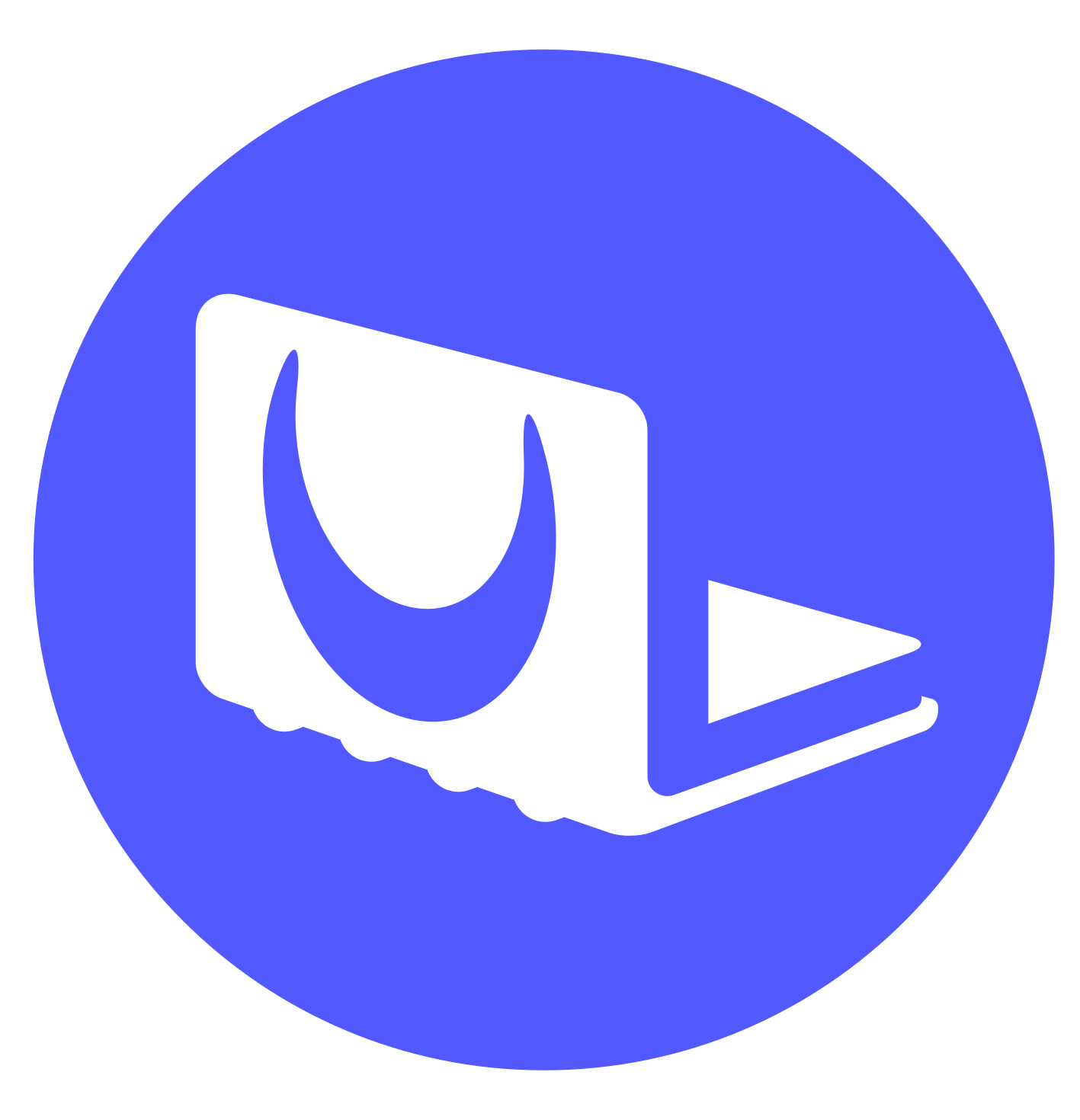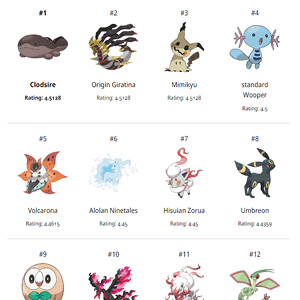About
RatePKMN is a project by UmbreonLibris to analyze and compare Pokémon designs through a more objective lens than the views of a single person. We will aggregate the ratings you provide to calculate the average opinions of Pokémon fans on each Pokémon. The data is public and open.
How to rate
The Pokémon designs are presented in random order. For each Pokémon design, use the sliders to select where you think it falls on each criterion. When you have selected a rating for every item, click Submit. You will be shown how your ratings compare to the average so far. Click Next to move on to the next Pokémon.
Data Collection Methodology
We do not present Pokémon in any specific order to minimize how direct comparisons between one design and the next might affect the ratings.
Some users might only rate a few designs. To ensure every design gets an even number of total ratings, we randomly select the next Pokémon from the pool of designs with the fewest ratings.
Other users might rate Pokémon over multiple sessions. To avoid asking users to rate the same design multiple times, we use a cookie to track which designs each user has already rated. People accessing from different devices are treated as distinct users. Sessions are reset after one year of inactivity, at which point a user can re-rate Pokémon. The allows for changes in opinion over time.
Frequently Asked Questions
What is considered a separate Pokémon design?
Since this is a project to rate Pokémon designs, most forms get separate ratings. Generally, we consider a form a distinct design if it has its own official Sugimori-style artwork. For example, every Tatsugiri has unique art, so they get shown separately. Meanwhile, Alcremie has only one piece of art despite its many forms, so only one Alcremie is included.
However, there are some exceptions:
- Forms that are inherent to the main concept are shown as a single design: Cherrim Overcast and Sunshine, Reshiram standard and Activated, Zekrom standard and Activated, White Kyurem standard and Activated, Black Kyurem standard and Activated, Aegislash Shield and Battle, Marshadow standard and Zenith, Eiscue Ice Face and Noice Face, Morpeko Full Belly and Hangry.
- There is no official art for Eiscue Noice Face, but we included it alongside Ice Face as a single Eiscue design.
- There is no official art for Galarian Darmanitan Zen Mode, but we included it as a separate design.
- Oddly, there is only official art for four of Furfrou’s ten forms. For consistency, we included all ten as unique designs.
- Vivillon was a curious case: there is official art for all of its forms, but only Meadow Vivillon is drawn in a unique pose; the others are essentially T-posing. We included them all as a single Pokémon design, with all forms in one image.
- We did not include Pikachu’s Hat and Costume varieties or Rotom’s Dex and Phone forms, even though they have separate official art.
What should I be comparing to?
You do not need to compare the Pokémon to anything in particular. Follow your instinct. Think about other Pokémon, other games and anime, and even other media you are familiar with. We intend to compare Pokémon to each other and identify how Pokémon compare to creatures from different franchises.
How do you define these terms?
We encourage you to go with your instinct. It would be impossible to find definitions everyone agrees with, so we chose to leave them undefined. Even though different people may have very different ideas of what some of these terms mean, with enough ratings, our individual biases should tend toward the average.
However, if you would feel more comfortable having some sense of what they mean, you can use the following guiding questions:
- Simple/Complex: Is it made of a few simple shapes, or does it contain many different elements?
- Cartoony/Realistic: Are its features exaggerated and caricatured, or does it look like something that could exist in the real world?
- Biological/Artificial: Does it look like something that evolved naturally, or does it appear to be manufactured?
- Normal/Fantastical: Does it come across as an ordinary creature, or does it look magical or imaginary?
- Humanoid: How closely does it resemble the human form?
- Cute: Does it look appealing in a pleasant, youthful or endearing manner?
- Cool: Does it look appealing in an exciting, provocative or moody manner?
- Ugly/Pretty: Does it look repulsive and unattractive, or is it appealing and beautiful? Does it meet modern beauty standards?
- Like/Dislike: How closely does it align with your tastes and preferences in Pokémon design?
Why are these the criteria?
We had to create a set of criteria that would balance data and user engagement. We could have come up with a much longer list, but demanding 30 ratings at a time from people would be too much and likely cause users to drop out of rating more quickly.
Therefore, we needed to keep the number of scales to only the essentials. We consulted other Pokémon fans and fanmon artists to decide the best criteria to include. We settled on eight standards of creature design, plus one to help gauge popularity.
Where can I find up-to-date averages for Pokémon I already rated?
Visit the Data page to explore the results or download the data.
New Pokémon have been revealed and/or released. Why aren’t they in the database?
Before we can add new Pokémon, we need to know their National Pokédex number, their official art needs to be available, and their data needs to be added to PokéAPI. In most cases, these criteria should be fulfilled within two to three months of a game’s release. This also gives everyone time to get used to the designs before rating them.
Contact
If you notice any errors, please contact Libris via Discord at @umbreonlibris.




